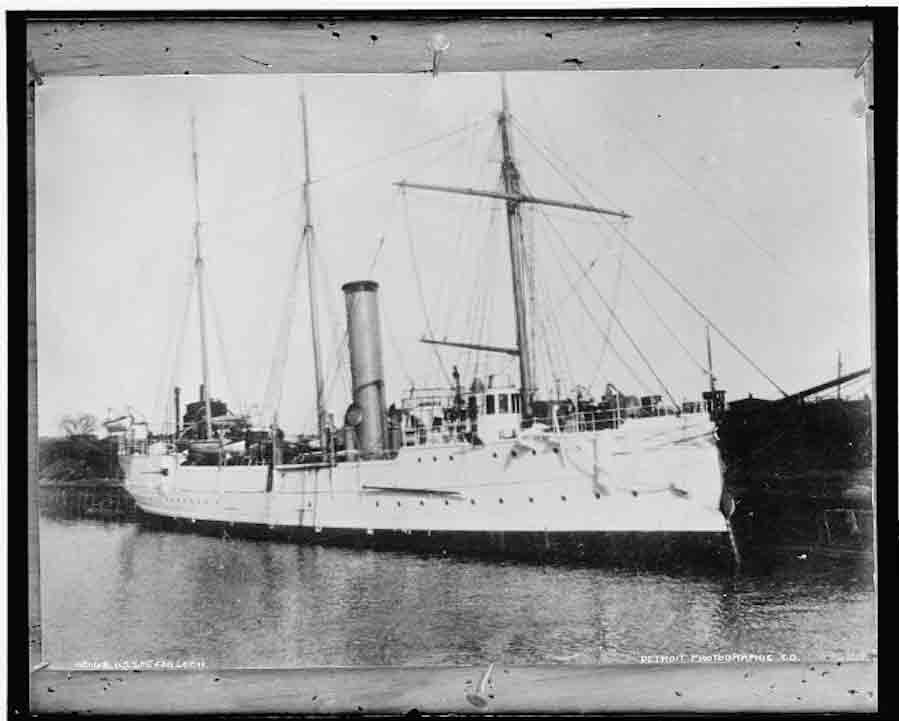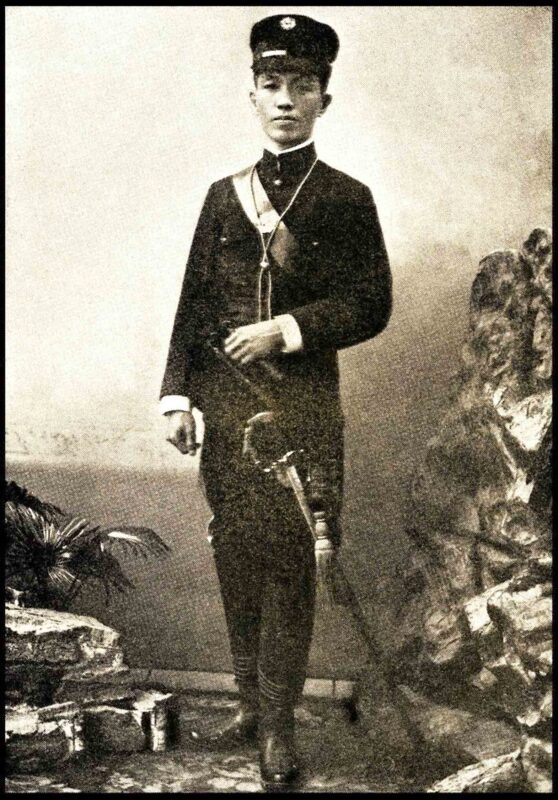May 1898: The Spanish-American War gets very hot — in the Philippines

Gen. Emilio Aguinaldo was given transport on an American ship, the U.S.S. McCulloch, on May 16, 1898.
By May 1, 1898, it had been 12 days since the United States President William McKinley had signed the declaration of war against Spain. During those 12 days, the U.S. Navy had established a significant blockade of Havana, Cuba. At this point, hostilities between the warring countries were minimal. The quiescent period ended abruptly on May 1.
Ironically, the first major battle of the Spanish-American War did not transpire in Cuba, which was only 90 miles from the American shoreline. Instead, the first major battle occurred in Manila Bay on May 1, 1898. The Spanish had controlled the Philippine Islands for over three hundred years. Compared to Cuba, the Philippines was thousands of miles away from the American West Coast.
The Battle of Manila Bay was extremely lopsided. The Spanish fleet, which was stationed at Sangley Point, Cavite, was very antiquated and in need of substantial upgrades. The fleet would have been adequate for the Mid-19th century but not for the approaching 20th century. The American Asiatic Fleet was modern and large enough to inflict major damage to the Spanish ships. Within a few hours, the Battle of Manila Bay was over.
You may also like: Filipino and Cuban insurrectos on eve of Spanish-American War
The commanding officer of the American fleet was Commodore George Dewey. After the battle, he became an American hero, and his popularity in the United States was enormous. On May 7, 1898, he became Admiral Dewey.
Shortly after the naval victory, Dewey ordered a contingent of U.S. Marines and U.S. Navy sailors to seize the Spanish facilities at Sangley Point. Next, Dewey ordered the capture of the Spanish facilities on Corregidor Island. Corregidor protected the entrance to Manila Bay

Gen. Emilio Aguinaldo
Although Dewey controlled Manila Bay and a few military bases, he realized that he was very vulnerable since he was so far from the United States. He had also received intelligence that a Spanish rescue fleet was heading to the Philippines. Fortunately for Dewey, he was informed by the War and Naval Departments that a convoy with supplies, ammunition and U.S. Army soldiers were departing San Francisco by May 25, 1898, and heading for Manila.
The American victory at Manila Bay unleased a resurgence for the Philippine independence junta who were exiled in Hong Kong. Emilio Aguinaldo had communicated with several American diplomats and military officers on forming an alliance to defeat the common enemy, Spain. Aguinaldo thought that he had an American commitment for Philippine independence in exchange for Filipino rebels fighting the Spanish. He was willing to accept an American Protectorate if the Filipinos had local and provincial government control.
In the short-term, the Americans did see a major role for Emilio Aguinaldo. He was given transport on an American ship, the U.S.S. McCulloch, on May 16, 1898. He arrived at Cavite, his home province, three days later. His initial relationship with Dewey was very good. The cooperation between the two of them was mutually beneficial. Dewey did receive instructions from Secretary of the Navy John Long not to make any promises to Aguinaldo.
In less than a week, Aguinaldo had revitalized and gained control of the Philippine insurgency. He was given the title “Dictator” until an elected government was formed. By late May 1898, less than two weeks after his return on the U.S.S. McCulloch, he had approximately 30,000 men under his command.
Dewey had to contend with an unexpected challenge to his authority in Manila Bay. Shortly after the May 1, 1898, battle, naval vessels from the United Kingdom, Japan, France and Germany entered Manila Bay to observe the situation. At the end of the 19th century, it was not uncommon for foreign observers to enter a war zone if they were respectful and followed protocol.
The French, Japanese and British ships were very respectful and adhered to protocol. Germany blatantly disregarded protocol and failed to ask for permission to enter the bay. By the middle of May, four German vessels were in Manila Bay. Admiral Dewey had tolerated too much German insolence. He ordered the firing of a shot across the bow of the German ships.
In addition to the ships, the Germans had landed men at Grande Island in Subic Bay and Mariveles in Bataan Province. The Germans claimed that they were only providing routine training exercises for their forces. Dewey was forced to take measures against the Germans’ provocative actions. Aguinaldo was also concerned with Germany’s actions in the bay and on land.
Germany had only been unified as a nation-state since 1871. The German Empire had rapidly become an imperial power and was looking for new colonies. The United States and Germany recently had had a crisis over Samoa in the Pacific.
By the end of May 1898, the stage was set for the Spanish-American War on Philippine soil. The Americans knew that a large amount of U.S. troops was on the way or scheduled to depart for the Philippines. Emilio Aguinaldo had regrouped his forces, and he was planning to capture all of Luzon outside of Manila. The capital of Manila would come next. The behavior of the German Empire showed that several imperial powers had been eyeing all or parts of the Philippine Islands.
Dennis Edward Flake is the author of three books on Philippine-American history. He is Public Historian and a former park ranger in interpretation for the National Park Service at the Eisenhower National Historic Site in Gettysburg, PA. He can be contacted at: flakedennis@gmail.com

